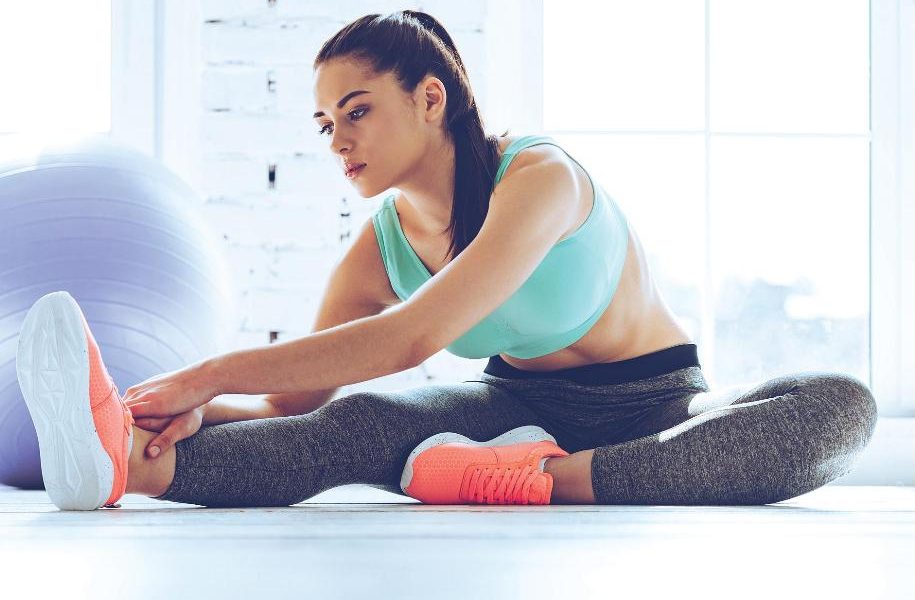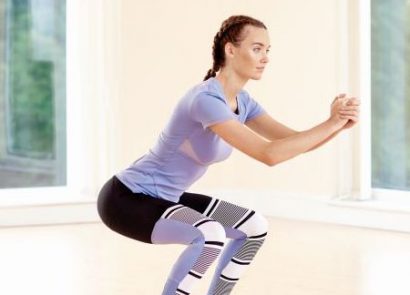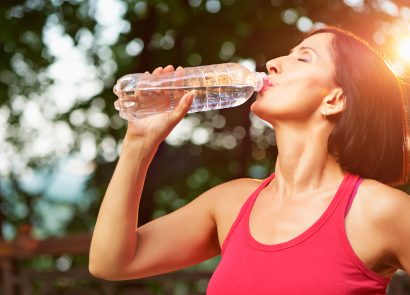DOMS (delayed onset muscle soreness) is the bane of a gym-goer’s life. You work really hard on those abs, just to pay for it the next day with muscle pain that has you limping around the office (and yes, we’re speaking from personal experience here). Luckily, former GB swimmer Charlie Turner is on hand with these tips to reduce your pain…
-
Shake it off Protein has become a bit of a buzzword recently, and for good reason. It’s vital for muscle repair, so drinking a protein shake after an intense workout is a great way to get nutrients to your muscles. Shakes are a fast-digesting source of protein that can boost muscle recovery, accelerate the healing of muscle fibres, and reduce symptoms of DOMS.
Consuming some BCAAs (branched chain amino acids) before or during your workout can help your body to synthesise the protein, which helps to repair your muscles faster. This is also available in powder form so you can easily add it to a drink. -
Take a bite What you eat following a session at the gym can also reduce your likelihood of suffering from muscle pain. Try eating antioxidant-rich foods such as cherries, blackberries, strawberries and blueberries after your workout, as these fruits pack a nutritional punch and will help to halt the onset of DOMS.
Cherries in particular are full of anthocyanins, which help to increase the rate at which oxygen travels to your ailing muscles. Bananas are another great option, as their high levels of potassium can help to alleviate muscle cramping. -
Stretch it out Although you may just want to collapse on the sofa after exercise, it’s important to ensure that you cool down properly. Begin with 10 minutes of light cardio, followed by some dynamic stretching, such as lunges and squats. Be sure to stretch out all of your muscles, and then use a foam roller, which will not only ease both tightness and tension in your muscles and connective tissue, but will also increase blood flow to the affected areas, helping avoid inflammation. A word of caution – do this while your muscles are still warm from your workout, or you’re likely to increase the soreness.
-
Have a nap We all know how hard it is to get to bed early when you’re busy – there’s always a million and one things to do before you can hit the hay. However, a lack of snooze time can aggravate DOMS.
When you’re in the deep stages of sleep, you produce muscle-building chemicals such as the human growth hormone (HGH) and your body is able to restore and repair itself, meaning that dozing is a powerful tool for aiding muscle soreness. Aim for a solid eight hours a night and develop a good bedtime routine, such as avoiding looking at bright screens an hour or two before you go to bed, to ensure that you are benefiting from deep sleep states. -
Meet your matcha Love a cup of joe? If so, you’re in luck, as the effects of caffeine on performance and recovery are well-documented and researched. However, instead of reaching for a flat white or a builder’s brew next time, try sipping a cup of matcha green tea before you hit the gym. This powder powerhouse will provide you with a kick of caffeine as well as the added benefits of matcha’s high antioxidant capabilities, and you’ll find that drinking a cup before you work out will reduce soreness. It also helps to protect your body from free radicals, improving both heart and lung health, and will increase your metabolism.
-
Get active Active recovery is another key component in avoiding DOMS. Despite the fact that this may be the last thing that you want to do, it’s a good idea to do some gentle exercise to keep your muscles moving following a high-intensity workout, as active recovery dramatically decreases muscle soreness. Low impact exercise such as walking or swimming is ideal – this may be painful to start with, but once your blood gets flowing it will usually start to feel better.





















